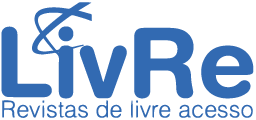Controlled Language between Portuguese and Chinese
DOI:
https://doi.org/10.30620/pdi.v14n1.p221Keywords:
Controlled language. Chinese language and Portuguese language. Translation.Abstract
In the 20th century, with the globalization of the economy, Increasing migration and the development of automatic translation, the concept of controlled language emerged and continued to expand and deepen, attracting wide attention from scholars In linguistics and translation circles. With this text, we aim to reflect on controlled language, highlighting its origin, typologies and function. In addition, of course, we briefly reflect on Controlled Language (CL) with regard to the Chinese language and the Portuguese language. Finally, we highlight the relevance of such a study, of the research on this language, considering the Increasingly close communication between China and Portuguese-speaking countries. Such language could play an important role In the field of automatic translation, teaching, writing texts for technical communication and In the field of artificial Intelligence, avoiding ambiguities, favoring understanding and translatability.
Downloads
References
Adolphson, E. (1998, May). Writing Instruction and controlled language applications: Panel discussion on standardization. In Proceedings of the Second International Workshop on Controlled Language Applications (CLAW98) (p. 191).
Allen, J. (1999). Adapting the concept of “translation memory” to “authoring memory” for a controlled language writing environment. In Proceedings of Translating and the Computer 21.
Almqvist, I., & Hein, A. S. (2000). A language checker of controlled language and its Integration In a documentation and translation workflow. In Proceedings of Translating and the Computer 22.
Allen, Jeffrey. (1999). Different kinds of Controlled Languages. In TC-Forum magazine, volume 1-99, 4-5.
Allen, J. (2003). Controlled Translation: the Integration of Controlled Language and Machine Translation. Panel session, EAMT/CLAW.
Crabbe, S. (2017). Controlling language In Industry: Controlled languages for technical documents. Palgrave Macmillan. DOI 10.1007/978-3-319-52745-1_1
Cremers, L. (2003). Controlled Language In an Automated Localization Environment. Keynote address at EAMT/CLAW.
Kamprath, C., Adolphson, E., Mitamura, T., & Nyberg, E. (1998, May). Controlled language for multilingual document production: Experience with Caterpillar technical English. In Proceedings of the Second International Workshop on Controlled Language Applications (Vol. 146).
Kathy ,B. et al. (1999). GIFAS Rationalized French: A Controlled Language for Aerospace Documentation In French. Technical Communication, Volume 46 (2), 220-229.
Marrafa, P., Amaro, R., Freire, N., & Mendes, S. (2012). Portuguese controlled language: Coping with ambiguity. In Controlled Natural Language: Third International Workshop, CNL 2012, Zurich, Switzerland, August 29-31, 2012. Proceedings 3 (pp. 152-166). Springer Berlin Heidelberg.
Mitamura, T. (1999, September). Controlled language for multilingual machine translation. In MTSummit, 46-54.
Muegge, Uwe. (2007). Controlled language: The next big thing In translation? ClientSide News Magazine. http://works.bepress.com/uwe_muegge/4.
Nyberg, E. H., & Mitamura, T. (1996, March). Controlled language and knowledge-based machine translation: Principles and practice (pp. 74-83). In Proceedings of the first International workshop on controlled language applications.
Rascu, E. (2006). A controlled language approach to text optimization In technical documentation. Proc. of KONVENS 2006, 107-114.
Spaggiari, L., Beaujard, F., & Cannesson, E. (2003). A controlled language at Airbus (pp. 107–122). In EAMT Workshop: Improving MT through other language technology tools: resources and tools for building MT. http://dx.doi.org/10.1075/li.28.1.09spa
冯全功& 高琳.(2017).基于受控语言的译前编辑对机器翻译的影响. 当代外语研究(02), 63-68+87+110.
胡清平.(2005).机器翻译中的受控语言. 中国科技翻译(03), 24-27. doi:10.16024/j.cnki.issn1002-0489.2005.03.008.
胡清平.(2005).受控语言及其在汉英机器翻译里的应用前景.国际译联第四届亚洲翻译家论坛论文集, 134-141.
袁亦宁.(2003).受控语言:机器翻译的新途径. 上海科技翻译(03), 77-80.
Published
How to Cite
Issue
Section
License
Copyright (c) 2024 Pontos de Interrogação – Journal of Cultural Criticism

This work is licensed under a Creative Commons Attribution-ShareAlike 4.0 International License.
Autores que publicam nesta revista concordam com o seguinte termo de compromisso:
Assumindo a criação original do texto proposto, declaro conceder à Pontos de Interrogação o direito de primeira publicação, licenciando-o sob a Creative Commons Attribution License, e permitindo sua reprodução em indexadores de conteúdo, bibliotecas virtuais e similares. Em contrapartida, disponho de autorização da revista para assumir contratos adicionais para distribuição não-exclusiva da versão do trabalho publicada, bem como permissão para publicar e distribuí-lo em repositórios ou páginas pessoais após o processo editorial, aumentando, com isso, seu impacto e citação.























